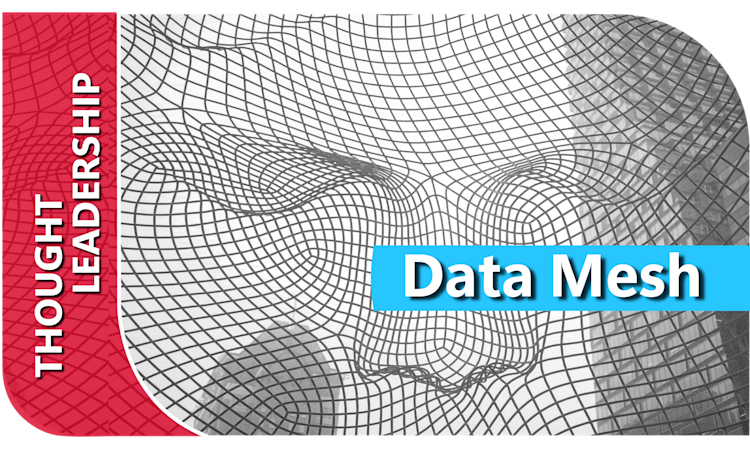In the ever-evolving landscape of data management, a new concept has emerged, promising to revolutionise how organisations handle their data assets. Known as "Data Mesh," this innovative approach offers a decentralised and collaborative way to share, access, and manage analytical data.
The principles and benefits of Data Mesh: Download Whitepaper
1: Unveiling the Data Mesh
The term "data mesh" might be on the lips of many industry experts, but what exactly is it? At its core, a data mesh is a decentralised and sociotechnical framework that aims to solve the challenges of managing complex and large-scale data environments. Zhamak Dehghani, the founder of the data mesh concept, describes it as a way to share, access, and manage analytical data across organizations, fostering collaboration and efficiency.
2: Evolution of Data Management
To better understand the significance of the data mesh, let's first consider the traditional stages of data management within organisations. The evolution begins with a centralised data team, but as the complexity of data grows, aligning data teams with specific business domains becomes crucial. This shift reduces bottlenecks, enhances collaboration between domain experts, and introduces self-service data models tailored to unique demands.
3: Four Pillars of Data Mesh Design
The success of a data mesh hinges on four key principles: domain ownership, treating data as a product, self-serve data platforms, and federated computational governance.
By giving each domain the responsibility to design, build, and manage data products, organisations ensure accountability and accuracy.
Treating data as a product ensures meaningful and valuable outputs, while self-serve platforms empower teams to create and share data products autonomously.
4: Who Stands to Benefit?
Data mesh is not a one-size-fits-all solution. It thrives in large enterprise organisations with complex data management needs, multiple business domains, and a mature data environment. Organisations struggling with bottlenecks and inefficiencies due to centralised data teams can reap significant benefits from adopting the data mesh approach.
5: Implementing a Data Mesh Strategy
Deploying a data mesh requires a top-down approach rooted in an organisation's overarching data strategy. Defining business domains, identifying use cases, and adhering to eight data product design principles are crucial steps. The goal is to interconnect data products and create an environment that fosters collaboration and scalability.
6: The Journey Ahead
Implementing a data mesh is a commitment that spans multiple phases. The Explore phase marks the beginning, followed by the Expand phase where the organization's broader teams begin publishing their products on the data mesh. Finally, the Scale phase enhances capabilities and continuously adds value to data consumers.
Conclusion
The data mesh concept is reshaping the way organisations manage and leverage their data assets. By embracing a decentralised and collaborative approach, businesses can break down bottlenecks, empower domain experts, and enhance the value derived from their data. As technology continues to advance, the data mesh approach offers a promising vision for the future of data management, enabling organisations to thrive in the data-driven era.
Keyrus is your trusted partner for building sustainable, high-performing data architectures. Using our extensive and deep expertise in designing and creating data repositories, we can partner with you and your business to ensure that you receive a platform capable of meeting your data demands and delivering unique value to your stakeholders, employees, and customers.
Keyrus is ready to help you design an actionable data strategy that will deliver your business objectives and drive commercial success. Contact us at sales@keyrus.co.za.
